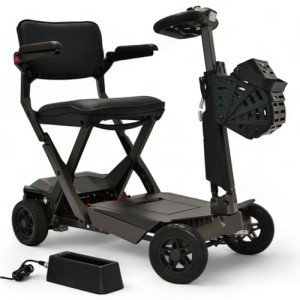A Guide To Mobility Scooter From Start To Finish

Mobility Scooters: A Comprehensive Guide
Mobility scooters have become an important mode of transportation for numerous individuals facing mobility challenges. This short article checks out the different aspects of mobility scooters, including their types, benefits, functions, and a guide for potential purchasers.
Understanding Mobility Scooters
Mobility scooters are electrically powered gadgets designed for people with minimal mobility. They offer a way of transportation for individuals who may have problem walking however still want to maintain their independence. They come in various styles and features to cater to a vast array of needs.
Types of Mobility Scooters
Mobility scooters can normally be categorized into 3 main types:
| Type | Description | Best For |
|---|---|---|
| Compact Scooters | These are small and lightweight, ideal for indoors and short trips. | Users with minimal storage space or those who take a trip frequently. |
| Mid-size Scooters | A balance in between portability and stability, ideal for both indoor and outside usage. | Those who require to cover a range of terrains. |
| Heavy-duty Scooters | Big and robust, created for rugged outside usage and heavier people. | Users needing extra weight capacity or going off-road. |
Secret Features of Mobility Scooters
The choice of mobility scooter typically depends upon the features that line up with individual requirements. Here are some of the essential features to think about:
- Weight Capacity: Mobility scooters come with various weight limits. It is crucial to choose a scooter that can adequately support the user's weight.
- Range: The range a scooter can take a trip on a single charge differs. Depending on user requirements, one might choose scooters with a range of as much as 40 miles.
- Speed: Most mobility scooters can reach speeds in between 4 to 8 mph. Consider what speed is comfy and safe for the designated environment.
- Turning Radius: A compact turning radius is vital for indoor usage, permitting easier navigation in tight spaces.
- Battery Type: The kind of batteries used can affect the scooter's performance. Lead-acid and lithium-ion batteries are the most common.
Advantages of Using Mobility Scooters
The advantages of mobility scooters extend beyond simply transportation. Some essential benefits consist of:
- Independence: Users can browse their environment without depending on caregivers, promoting independence and confidence.
- Health Benefits: Using a scooter can encourage outdoor activity, resulting in physical and psychological health enhancements by reducing sensations of seclusion.
- Convenience: Scooters can easily be operated in different environments, whether indoors, in shopping center, or outdoors.
Crucial Considerations When Buying a Mobility Scooter
When buying a mobility scooter, a number of factors to consider can help ensure that you pick the right design:
Assess Individual Needs:
- Mobility level: Consider just how much assistance the individual will need.
- Variety of usage: Determine where the scooter will mainly be utilized (inside your home, outdoors, on rough terrains, etc).
Test Drive:
- Always test drive several models to find an ideal fit. Take note of convenience, ease of steering, and the scooter's responsiveness.
Review Safety Features:
- Look for scooters with appropriate safety functions like lights, signs, and anti-tip styles.
Check Warranty and Service Options:
- A reputable warranty and available service choices are vital for long-lasting use.
Frequently Asked Questions about Mobility Scooters
1. How quickly do mobility scooters go?Mobility scooters generally have speeds varying from 4 to 8 mph, with a lot of developed for security rather than high-speed travel. 2. Exist weight constraints on mobility scooters?Yes, mobility
scooters come with specific weight limitations, often varying from
250 lbs to over 500 lbs, depending upon the model. 3. Can mobility scooters be used indoors?Certain models, especially compact scooters, are specifically developed for
indoor usage and are much easier to navigate in tight spaces. 4. How frequently do the batteries need to be replaced?Battery life can differ based upon use, however generally, with appropriate care, batteries may last between 1 to 3 years before requiring replacement
. 5. Are mobility scooters covered by insurance?Coverage can differ, but some insurance coverage plans, consisting of Medicare and Medicaid, may cover part of the expense. It's recommended to consult individual insurance providers. Mobility scooters serve as a
valuable tool for lots of people, enabling them to maintain
their flexibility and self-reliance. By understanding cheap mobility scooters and features of mobility scooters, people can make informed choices tailored to their particular requirements.
Whether utilized for errands, mingling, or leisurely activities, mobility scooters can boost the lifestyle for those with mobility restrictions. Purchasing a mobility scooter is a decision that can considerably impact a person's daily life. For that reason, individuals need to thoroughly evaluate their options and pick a model that best aligns with their lifestyle and mobility requirements
.

